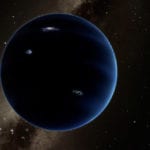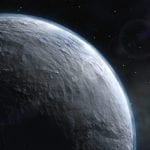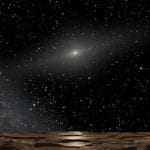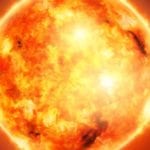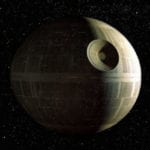 Our World
Our World  Our World
Our World  Pop Culture
Pop Culture 10 Incredible Female Comic Book Artists
 Crime
Crime 10 Terrifying Serial Killers from Centuries Ago
 Technology
Technology 10 Hilariously Over-Engineered Solutions to Simple Problems
 Miscellaneous
Miscellaneous 10 Ironic News Stories Straight out of an Alanis Morissette Song
 Politics
Politics 10 Lesser-Known Far-Right Groups of the 21st Century
 History
History Ten Revealing Facts about Daily Domestic Life in the Old West
 Weird Stuff
Weird Stuff 10 Everyday Products Surprisingly Made by Inmates
 Movies and TV
Movies and TV 10 Actors Dragged out of Retirement for One Key Role
 Creepy
Creepy 10 Lesser-Known Shapeshifter Legends from Around the World
 Our World
Our World 10 Science Facts That Will Change How You Look at the World
 Pop Culture
Pop Culture 10 Incredible Female Comic Book Artists
 Crime
Crime 10 Terrifying Serial Killers from Centuries Ago
Who's Behind Listverse?

Jamie Frater
Head Editor
Jamie founded Listverse due to an insatiable desire to share fascinating, obscure, and bizarre facts. He has been a guest speaker on numerous national radio and television stations and is a five time published author.
More About Us Technology
Technology 10 Hilariously Over-Engineered Solutions to Simple Problems
 Miscellaneous
Miscellaneous 10 Ironic News Stories Straight out of an Alanis Morissette Song
 Politics
Politics 10 Lesser-Known Far-Right Groups of the 21st Century
 History
History Ten Revealing Facts about Daily Domestic Life in the Old West
 Weird Stuff
Weird Stuff 10 Everyday Products Surprisingly Made by Inmates
 Movies and TV
Movies and TV 10 Actors Dragged out of Retirement for One Key Role
 Creepy
Creepy 10 Lesser-Known Shapeshifter Legends from Around the World
10 Hypothetical Planets Proposed By Scientists
The planet Neptune used to be a hypothetical planet—it was predicted to exist but had never been seen. In fact, many other hypothetical planets have been proposed. Some have been ruled out, but others might have actually existed in the past and may even exist now.
10Planet X
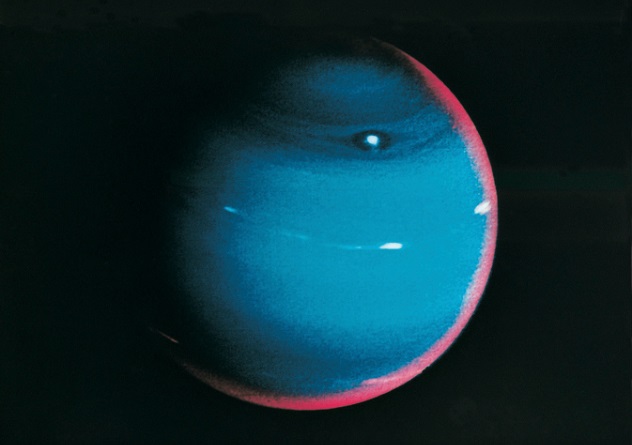
In the early 1800s, astronomers knew of all the major planets in our solar system except Neptune. They also knew Newton’s laws of motion and gravitation, which they could use to predict where the planets would move. When these predictions were compared to their actual observed movements, many noticed that Uranus wasn’t going where it was predicted to go. French astronomer Alexis Bouvard wondered if an unseen planet’s gravity was tugging Uranus off course.
Once Neptune was found in 1846, many astronomers checked to see if its gravity was enough to explain the observed motion of Uranus. It wasn’t. Perhaps there was yet another unseen planet? A ninth planet was suggested by many astronomers. This mysterious ninth planet’s most avid seeker was American astronomer Percival Lowell, who called it Planet X.
Lowell built an observatory with the goal of finding Planet X, but he never found it. Fourteen years after Lowell died, an astronomer at his observatory found Pluto, but it still wasn’t heavy enough to account for the observed motion of Uranus, so people kept looking for Planet X. They didn’t stop until the Voyager 2 probe passed by Neptune in 1989, when astronomers learned that they had measured Neptune’s mass incorrectly. This updated calculation of Neptune’s mass explained Uranus’s movement.
Discover hundreds of other fascinating planets just like these with The Exoplanet Handbook at Amazon.com!
9A Planet Between Mars And Jupiter
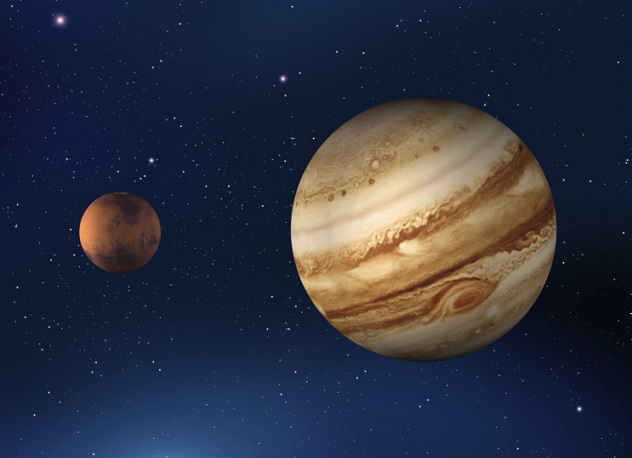
In the 16th century, Johannes Kepler noticed a big gap between the orbits of Mars and Jupiter. He imagined a planet might be there, but he didn’t actually look for it. After Kepler, many astronomers noticed a pattern in the orbits of the planets. The relative orbit sizes, from Mercury to Saturn, are approximately 4, 7, 10, 16, 52, and 100. If you subtract 4 from each of those, you get 0, 3, 6, 12, 48, and 96. Note that 6 is twice the size of 3, 12 is twice the size of 6, and 96 is twice the size of 48. There’s also a strange factor of four between 12 and 48.
Astronomers began to wonder if there was a missing planet between 12 and 48, at 24—that is, between Mars and Jupiter. As German astronomer Johann Elert Bode wrote, “After Mars, there follows a space of 4+24=28 parts, in which no planet has yet been seen. Can one believe that the founder of the universe had left this space empty? Certainly not.” When Uranus was discovered in 1781, its orbit size fit neatly onto the end of the above pattern. It was looking like a law of nature, which became known as Bode’s Law or the Titius-Bode Law, yet the annoying gap between Mars and Jupiter remained.
A Hungarian astronomer named Baron Franz von Zach also became convinced that Bode’s Law was real and that it meant an undiscovered planet must exist between Mars and Jupiter. He spent several years looking for it but found nothing. In 1800, he organized several astronomers to perform a systematic search. One of those astronomers was Italian Catholic priest Giuseppe Piazzi, who identified an object whose orbit was exactly the right size in 1801.
The object, which was named Ceres, was too small to be a planet, however. In fact, Ceres was considered to be an asteroid for many years, albeit the biggest asteroid in the main asteroid belt. Today, it’s classified as a dwarf planet, like Pluto. Incidentally, Bode’s Law was eventually discarded when Neptune’s orbit was found to be inconsistent with the pattern.
8Theia
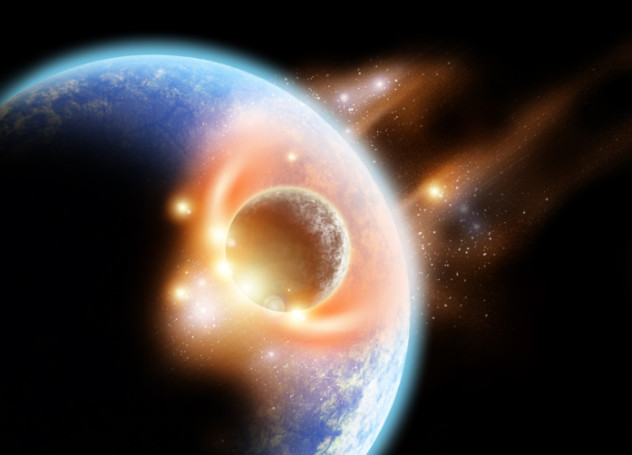
Theia is the name given to a hypothetical Mars-sized planet that may have hit the Earth about 4.4 billion years ago, disintegrating on impact and leading to the formation of the Moon. English geochemist Alex N. Halliday is credited with proposing the name, which is the name of the mythological Greek titan who gave birth to the Moon goddess Selene.
It’s worth noting that the origin and formation of the Moon is still a topic of active scientific research. While the Theia model, known as the Giant Impact Hypothesis, is the leading contender, it’s not the only one. Maybe the Moon was just captured somehow by Earth’s gravitational pull. Maybe the Earth and Moon formed around the same time as a pair. Maybe something else. It’s also worth noting that the early Earth was probably hit by many large bodies, and Theia is just the one that led to the formation of the Moon, assuming that’s what happened.
7Vulcan
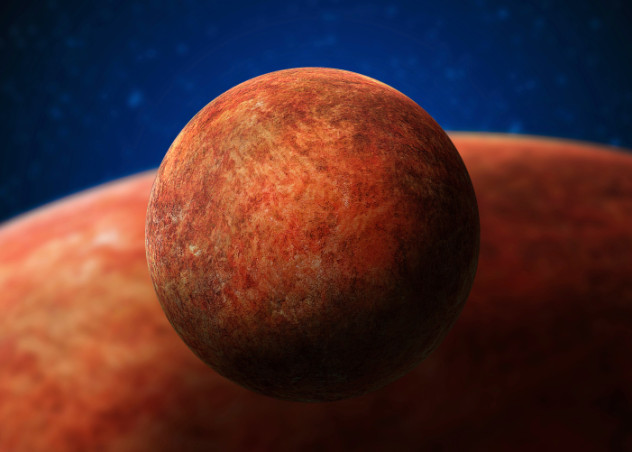
Uranus wasn’t the only planet whose observed motions didn’t jive with predictions. Another planet that had that problem was Mercury. The discrepancy was first observed by French mathematician Urbain Le Verrier, who noted that the low point in Mercury’s elliptical orbit, called the perihelion, was moving around the Sun faster than his calculations said it should. It was a small discrepancy, but additional observations of Mercury convinced him that it was real. He suggested that the discrepancy was caused by an undiscovered planet orbiting inside the orbit of Mercury, which he called Vulcan.
A long series of Vulcan “sightings” followed. Some turned out to be sunspots, but others were made by respectable astronomers and seemed plausible. When Le Verrier died in 1877, he believed that Vulcan’s existence had been confirmed. However, Einstein’s theory of general relativity was published in 1915, and it could properly predict the movements of Mercury. Vulcan was no longer needed, but people continued to look for objects orbiting the Sun inside the orbit of Mercury. There’s certainly nothing planet-sized, but there might be some asteroid-sized objects, which have been named “vulcanoids.”
6Phaeton
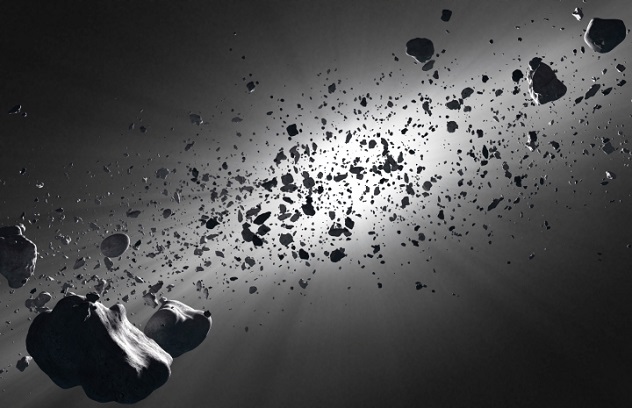
German astronomer and physician Heinrich Olbers discovered the second known asteroid, called Pallas, in 1802. He suggested that the two asteroids might be fragments of an ancient, medium-sized planet that was destroyed due to internal forces or the impact of a comet. The implication was that there might be more objects in addition to Ceres and Pallas, and indeed, two more were soon discovered—Juno in 1804 and Vesta in 1807.
The planet that supposedly broke up to form the main asteroid belt became known as Phaeton, after a character in Greek mythology who drove the sun chariot for a day. The Phaeton hypothesis had problems, though. For example, the sum of the masses of all the main belt asteroids is much smaller than the mass of a planet. Also, there’s a lot of variety in the asteroids, so how could they have come from the same parent? Today, most planetary scientists think the asteroids formed from the gradual sticking-together of smaller fragments.
5Planet V
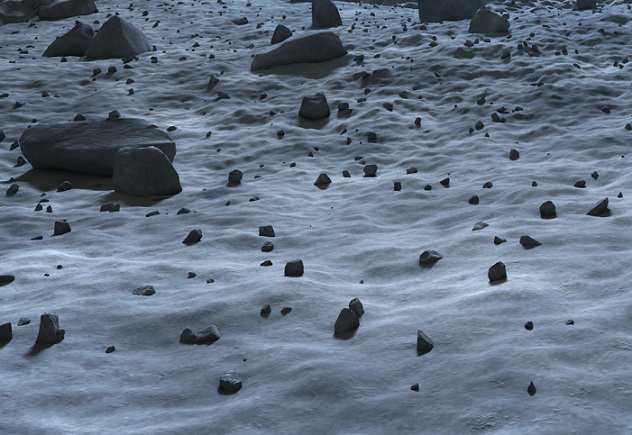
Planet V is the name of yet another hypothetical planet between Mars and Jupiter, but the reasons for thinking it once existed are completely different. The story starts with the Apollo missions to the Moon. The Apollo astronauts brought many moon rocks back to Earth, some of which were “impact melt rocks,” formed when something big like an asteroid hits the Moon and generates enough heat to melt rock. Scientists used radiometric dating to estimate when those rocks cooled and found something surprising—most cooled during a narrow window between 3.8 and 4 billion years ago.
Apparently, many asteroids or comets struck the Moon during that time interval, an event known as the Late Heavy Bombardment (LHB). It was “late” because it happened after most other bombardments. Big collisions happened all the time in the early solar system, but that time had passed. This raised a question: What happened to temporarily increase the number of asteroids hitting the Moon?
About 10 years ago, John Chambers and Jack J. Lissauer suggested that the cause might have been a long-lost planet, which they called Planet V. They proposed that Planet V started out in an orbit between the orbits of Mars and the main asteroid belt before the gravity of the inner planets caused Planet V to move out into the asteroid belt, where it knocked many asteroids onto trajectories that ultimately led them to hit the Moon. Meanwhile, Planet V crashed into the Sun. This hypothesis has been met with criticism—not everyone agrees that the LHB happened, but even if it did, there are other possible explanations besides the Planet V hypothesis.
Explore the mysteries of the cosmos from your backyard with the Celestron 127EQ PowerSeeker Telescope at Amazon.com!
4A Fifth Gas Giant
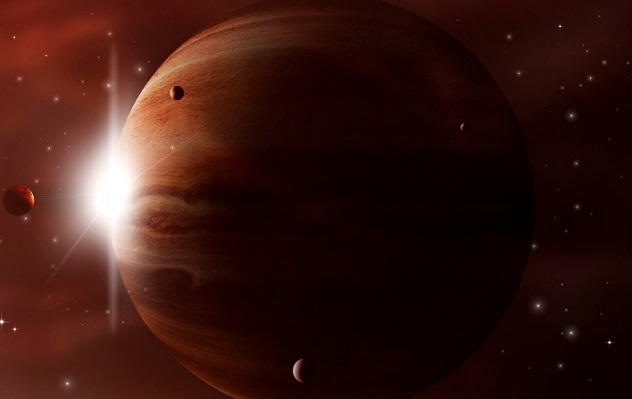
One of the other explanations for the LHB is the so-called Nice model, named after Nice, France, where it was first developed. According to the Nice model, Saturn, Uranus, and Neptune—the outer gas giants—started out in smaller orbits, surrounded by a cloud of asteroid-sized objects. Over time, some of those smaller objects passed close to the gas giants. Those close encounters caused the orbits of the gas giants to expand, albeit very slowly. Jupiter’s orbit actually got a bit smaller. At some point, Jupiter and Saturn’s orbits got into a resonance, causing Jupiter to go around the Sun twice every time Saturn went around once. That caused havoc.
A lot happened very quickly, by solar system standards. The almost-circular orbits of Jupiter and Saturn got stretched, and Saturn, Uranus, and Neptune had several close encounters. The cloud of smaller objects got stirred up, and the LHB was triggered. Once everything settled down, Jupiter, Saturn, Uranus, and Neptune had orbits similar to their current ones.
The Nice model also predicts other features of the current solar system, like Jupiter’s Trojan asteroids, but the original model didn’t explain everything. It needed modification. One suggested change was to add a fifth gas giant. In simulations, the event that triggers the LHB also ejects the hypothetical fifth gas giant from the Solar System. Such simulations lead to a solar system that looks like the current one, so it’s not an unreasonable idea.
3The Cause Of The Kuiper Cliff
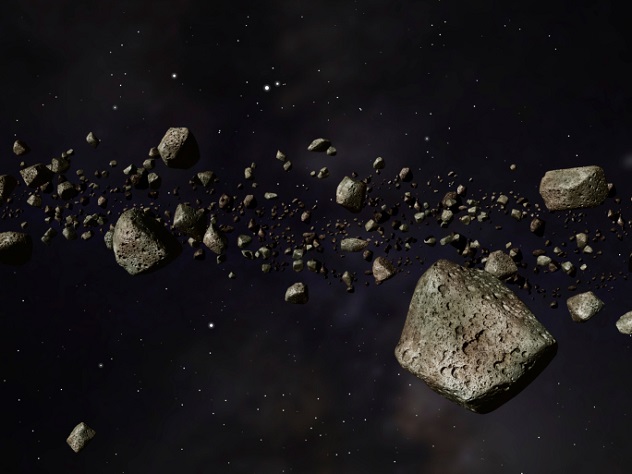
The Kuiper belt is a doughnut-shaped cloud of small, icy objects in orbit beyond Neptune. Pluto and its moons were the only known Kuiper belt objects (KBOs) for a long time, but in 1992, David Jewitt and Jane Luu announced the discovery of another object in the Kuiper belt.
Since then, astronomers have identified over 1,000 other KBOs, and the list is constantly growing. Almost all of them are closer than 48 astronomical units (one AU is the distance from the Sun to the Earth), which surprised astronomers, who expected there to be way more KBOs out beyond this distance. The reason is that Neptune’s gravity would have cleared out some of the KBOs that used to be closer, but the more distant KBOs should remain, unaffected by Neptune since the early days of the solar system.
The unexpected drop-off in KBO numbers beyond 48 AU is known as the Kuiper Cliff, and no one is really sure what caused it. Various groups of scientists have suggested that the Kuiper Cliff was caused by an unseen planet. Patryk S. Lykawka and Tadashi Mukai reviewed all the theories regarding the size and orbit of this planet, ruled them out, and came up with a new one of their own. This planet could cause the Kuiper Cliff and many other observed features of the Kuiper belt. Unfortunately, it’s predicted to be very far away (more than 100 AU), so it will be tricky to find, if it exists at all.
2The Cause Of Sedna-Like Orbits
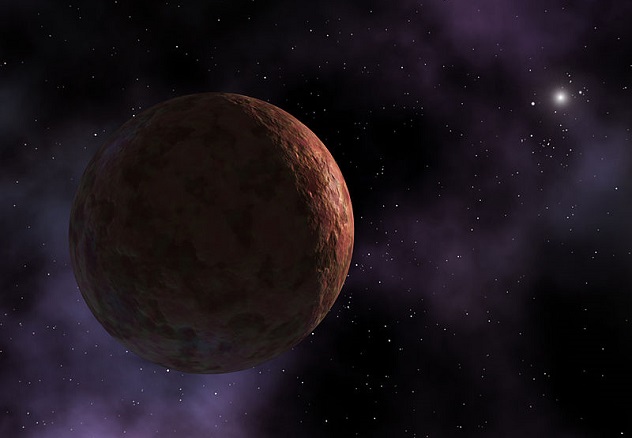
Mike Brown, Chad Trujillo, and David Rabinowitz identified Sedna in 2003. It’s a distant object on a very strange orbit around the Sun, compared to other objects in the solar system. The closest it ever gets to the Sun is about 76 AU, which is far out beyond the Kuiper Cliff. It takes about 11,400 years to complete its orbit, which is unusually stretched.
How did Sedna get into its giant orbit? It never comes close enough to the Sun to be affected by any of the eight planets. In their original Sedna paper, Brown et al wrote that Sedna’s orbit “could be the result of scattering by a yet-to-be-discovered planet, perturbation by an anomalously close stellar encounter, or formation of the solar system within a cluster of stars.” Amazingly, in March 2014, astronomers announced that they had found a second object with a similar orbit, currently known as 2012 VP113. Its discovery revived speculation on the possibility of an unseen planet.
1Tyche
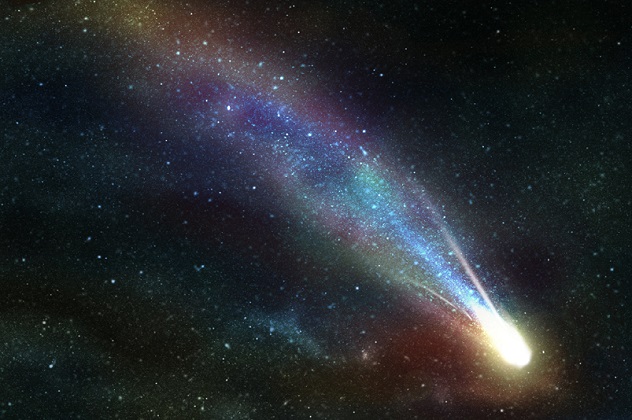
The period of a comet is how long it takes to go around the Sun once. A long-period comet has a period of at least 200 years and possibly much longer. Long-period comets come from a distant cloud of icy bodies known as the Oort cloud, which lies even farther out than the Kuiper belt.
In theory, long-period comets should come in equal numbers from all directions. In reality, however, comets do seem to come from some directions more often than others. Why? In 1999, John Matese, Patrick Whitman, and Daniel Whitmire suggested that the cause might be a large, distant object, which they nicknamed Tyche. They estimated Tyche’s mass to be about three times the mass of Jupiter. They estimated its distance to be about 25,000 AU from the Sun.
However, the Wide-field Infrared Survey Explorer (WISE) space telescope recently surveyed the entire sky, with disappointing results for Matese et al. According to a NASA press release dated March 7, 2014, WISE found that “no object larger than Jupiter exists out to 26,000 AU.” Apparently, Tyche doesn’t exist.
Troy McConaghy is a graduate of the International Space University and Purdue University. You can follow him on Twitter.
